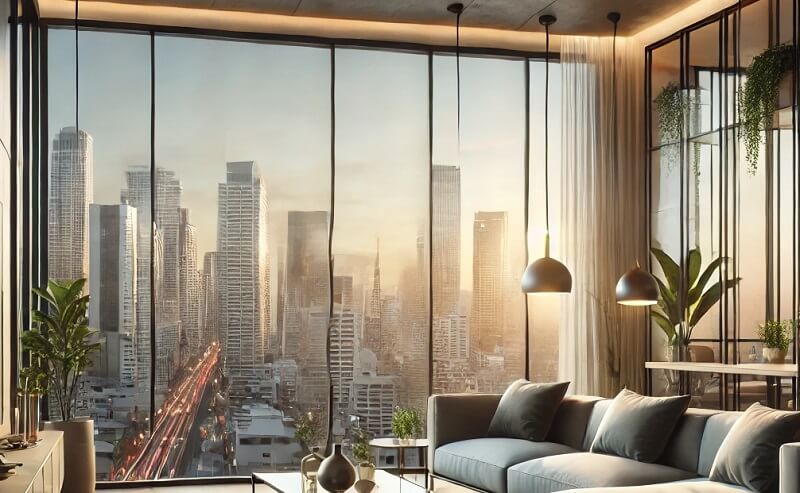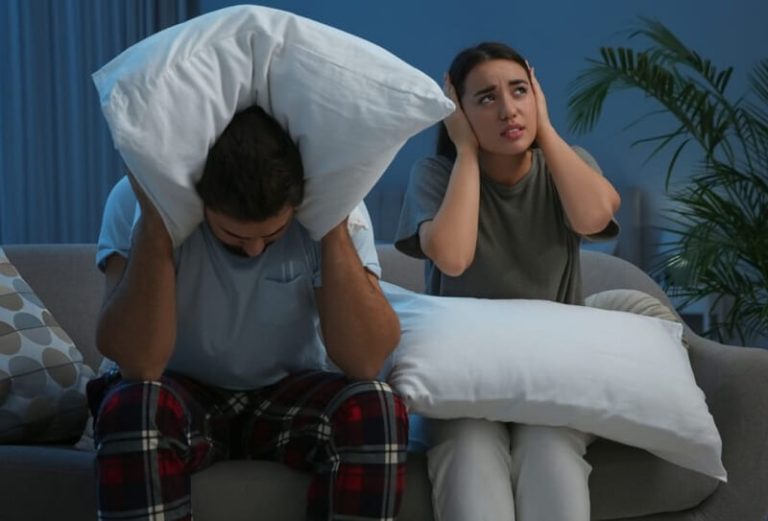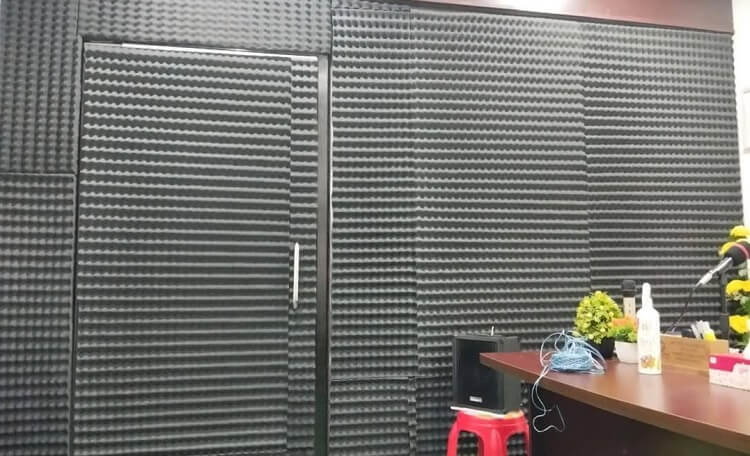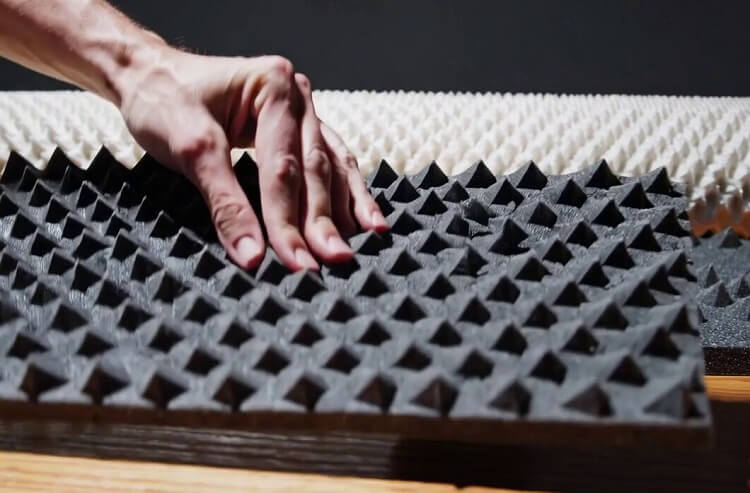
Living in a vibrant urban environment often comes with the unavoidable soundtrack of city life. From the constant hum of traffic and the rhythmic pulse of construction to the occasional revelry of neighbors, noise can significantly impact your peace and well-being. If you’re wondering, “How can I effectively soundproof apartments or urban spaces?”, this guide offers practical solutions to reclaim the tranquility of your home.
At InSmartWeb, we’ve spent years helping urban dwellers create quieter and more comfortable living spaces, and we’re here to share our expertise with you.
This comprehensive guide explores effective methods to block and absorb noise, empowering you to tailor solutions to your specific needs and budget. Whether you’re battling loud external sounds or managing internal disturbances, we’ll cover proven strategies that deliver noticeable results.
Assessing Noise Sources
External Noise
Urban spaces are perpetually surrounded by external noise sources. Heavy traffic, construction activities, sirens, and the general hum of city life are common culprits.
These noises typically infiltrate your apartment through windows, walls, and doors, disrupting your peace, quiet, and privacy. Identifying the primary external noise sources impacting your space is the first step towards effective soundproofing apartments.
Internal Noise
Internal noise originates from within the building itself. This could include footsteps from upstairs neighbors, voices traveling through shared walls, the rumble of appliances, or the echo of music.
Distinguishing between airborne noise (like conversations or television sounds) and impact noise (like footsteps or dropped objects) is crucial for selecting the appropriate soundproofing strategy. Airborne noise travels through the air, while impact noise travels through the building structure itself.
Key Soundproofing Principles
Blocking Noise
Blocking noise involves creating dense barriers that impede sound waves from passing through walls, floors, and ceilings. This method is particularly effective against loud external noises like traffic or a neighbor’s music system.
Materials with high Sound Transmission Class (STC) ratings are ideal for blocking noise.
Absorbing Noise
Noise absorption minimizes echoes and reverberations within a space, improving the overall sound quality within your apartment. Soft, porous materials like carpets, acoustic panels, and curtains are highly effective for managing internal sound disturbances and optimizing room acoustics. These materials work by converting sound energy into heat energy, thereby reducing reflections.
Decoupling Structures
Decoupling is a technique that minimizes the vibrations that transfer sound through shared structures.
By separating layers of walls, floors, or ceilings using resilient channels or floating floors, you disrupt the path of sound vibrations and reduce noise transmission. This is particularly effective against impact noise.
Effective Methods to Soundproof Walls
Install Mass Loaded Vinyl (MLV)
Mass Loaded Vinyl (MLV) is a dense, flexible material specifically engineered to block sound transmission. Installing MLV behind drywall adds mass to your walls, significantly reducing noise infiltration from neighbors or busy streets.
MLV typically achieves STC ratings between 25 and 35, effectively dampening a wide range of sound frequencies. You can find detailed installation guides on manufacturer websites like [Manufacturer Website Example].
Seal Gaps and Cracks
Even seemingly insignificant openings in walls can allow a substantial amount of noise to seep through. Use acoustic caulk to seal gaps around electrical outlets, baseboards, window frames, and vents.
This meticulous sealing prevents sound leakage and enhances the effectiveness of other soundproofing methods.
Add Acoustic Panels
While primarily designed to improve room acoustics by reducing reverberations and echo, strategically placed acoustic panels can also help reduce moderate noise levels. Positioning them on walls facing noise sources can help absorb some of the incoming sound energy. These panels come in various sizes, shapes, and colors to complement your decor.
Solutions for Windows and Doors
Upgrade to Double-Glazed Windows
Double or triple-glazed windows offer superior insulation against external noise compared to single-pane windows.
The air gap between the layers of glass creates a barrier that effectively blocks sound waves. Look for windows with a high Sound Transmission Class (STC) rating for optimal noise reduction. This upgrade also improves energy efficiency.
Use Soundproof Curtains or Window Inserts
Soundproof curtains, made from heavy, dense fabrics, are a cost-effective solution for reducing street noise.
Window inserts provide an additional layer of insulation, further enhancing noise reduction without the need for full window replacements. These are excellent renter-friendly options.
Replace Hollow-Core Doors
Hollow-core doors, commonly found in many apartments, transmit sound far more easily than solid-core doors. Upgrading to solid-core doors, in conjunction with weatherstripping along the edges and a door sweep at the bottom, helps block noise from hallways or adjoining rooms.
This creates a tighter seal and minimizes sound leakage.
Managing Floor and Ceiling Noise
Install Carpets and Rugs
Thick carpets and rugs with soundproof underlays can significantly absorb impact noise, reducing the sound of footsteps and furniture movement from above. Carpets also provide an additional layer of insulation for hard floors, further minimizing noise transmission.
Use Resilient Channels
Resilient channels are metal strips installed on ceilings or walls before drywall. They create an air gap that decouples the drywall from the structure, effectively reducing vibrations and noise transmission from upper floors or shared walls.
This method is particularly effective for mitigating impact noise.
Add Floor Underlayment
Specialized soundproof underlayment materials installed beneath flooring can dramatically reduce impact noise and vibrations. These underlayments are especially beneficial in apartments with thin ceilings and floors, where noise transfer is a common issue.
Real-Life Applications
Case Study 1: Apartment Near a Busy Road
A resident in a bustling city center faced constant noise from traffic. After installing double-glazed windows with an STC rating of 35 and adding soundproof curtains, they achieved a noticeable 15-decibel reduction in noise levels, transforming their living environment from chaotic to calm.
Case Study 2: Dealing with Noisy Upstairs Neighbors
An apartment dweller was constantly disturbed by the loud footsteps of their upstairs neighbors. Installing resilient channels beneath the ceiling drywall, followed by the installation of acoustic ceiling tiles, resulted in a 12-decibel reduction in impact noise, restoring peace and quiet to their home.
Case Study 3: Shared Wall Noise Management
A tenant was plagued by loud conversations seeping through a shared wall. Installing Mass Loaded Vinyl (MLV) with an STC rating of 28 behind the drywall and meticulously sealing all gaps with acoustic caulk created an effective sound barrier.
This combination reduced noise penetration by approximately 20 decibels, dramatically improving sound insulation and privacy.
Expert Tips for Maximizing Soundproofing
- Layer Materials: Combine sound-blocking materials like MLV with sound-absorbing materials like acoustic panels for optimal results, particularly on shared walls.
- Focus on Weak Points: Prioritize soundproofing efforts on windows, doors, and shared walls, as these are the most common sources of noise leakage.
- Choose Multi-Purpose Solutions: Select products like soundproof curtains or rugs that not only reduce noise but also enhance room insulation and aesthetics.
FAQ
What is the cheapest way to soundproof an apartment?
Cost-effective solutions like strategically placed rugs, soundproof curtains, weatherstripping around doors and windows, and sealing gaps with acoustic caulk can address common noise issues without requiring significant structural changes.
Can I soundproof a rented space?
Absolutely! Renter-friendly solutions like acoustic panels, removable window inserts, and soundproof curtains can significantly reduce noise without any permanent modifications to the apartment.
Are double-glazed windows worth the cost?
Yes, double-glazed windows are a valuable investment. They offer excellent noise insulation, improve energy efficiency, and can increase the value of your property.
While they represent a higher upfront cost, the long-term benefits often outweigh the initial investment.
Is professional soundproofing necessary?
For severe noise problems or complex structural issues, professional soundproofing is recommended. However, many effective DIY options are available for addressing minor to moderate noise issues. Assess the severity of your noise problem and your DIY skills to determine the best course of action.
Conclusion
Effectively soundproofing apartments or urban spaces involves a strategic combination of understanding noise sources and implementing appropriate solutions.
By addressing weak points with proven methods like Mass Loaded Vinyl, double-glazed windows, resilient channels, and a combination of sound-blocking and sound-absorbing materials, you can create a significantly quieter and more comfortable living environment. We encourage you to share your experiences and questions in the comments below. If you’d like personalized advice or assistance with your soundproofing project, please don’t hesitate to contact us at InSmartWeb.
Start implementing these strategies today and enjoy the tranquility of your urban oasis.






